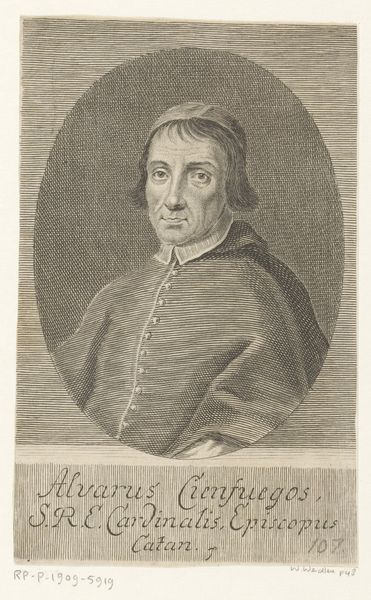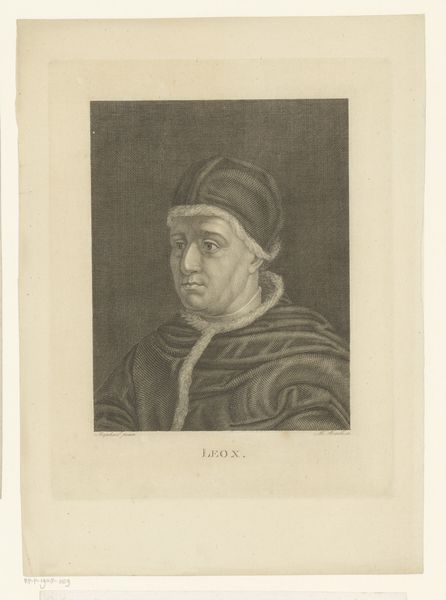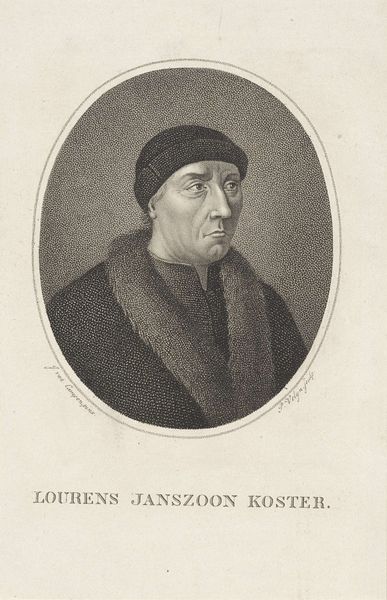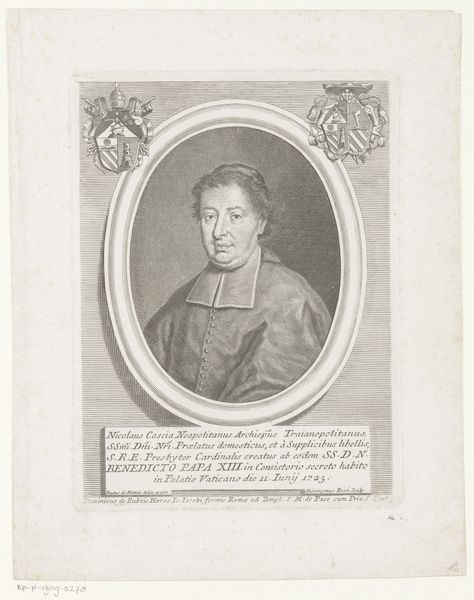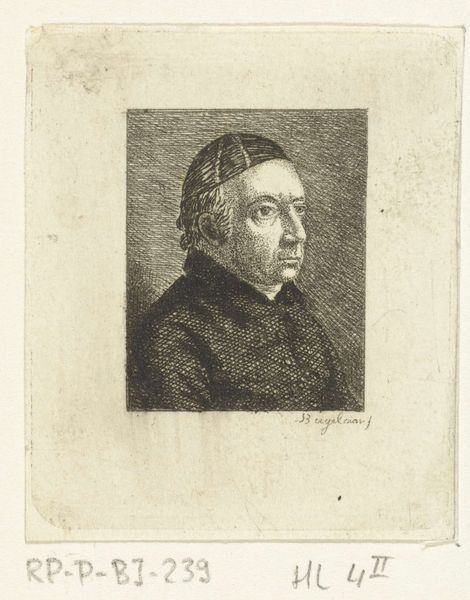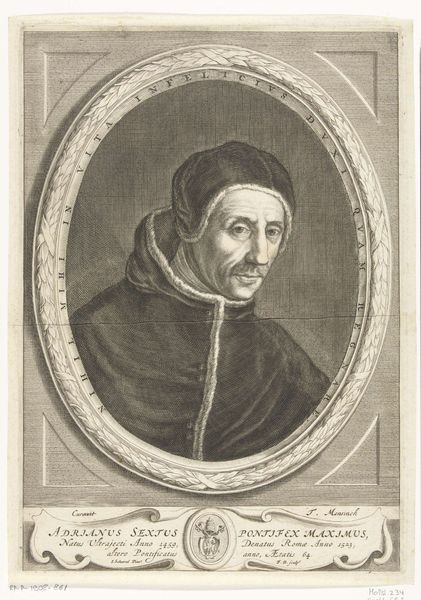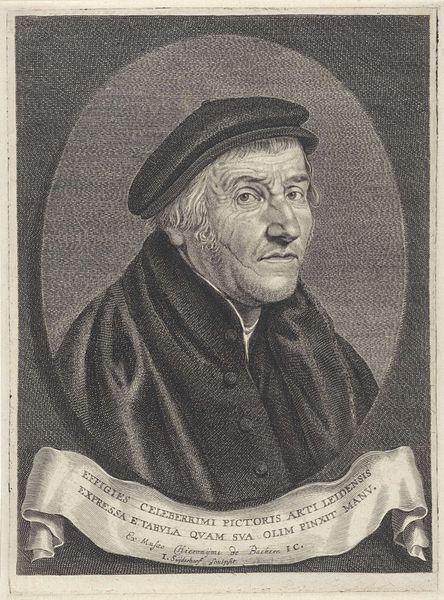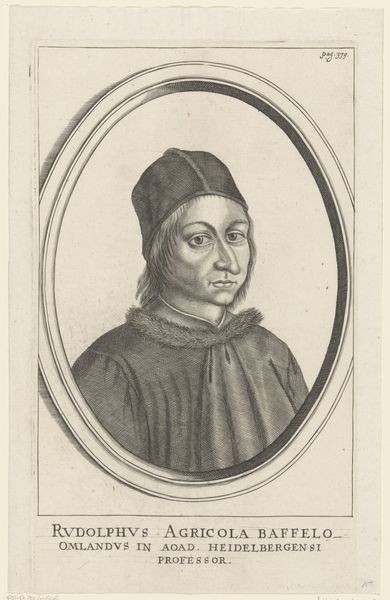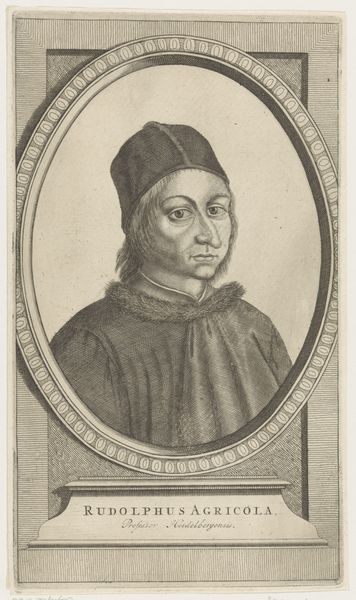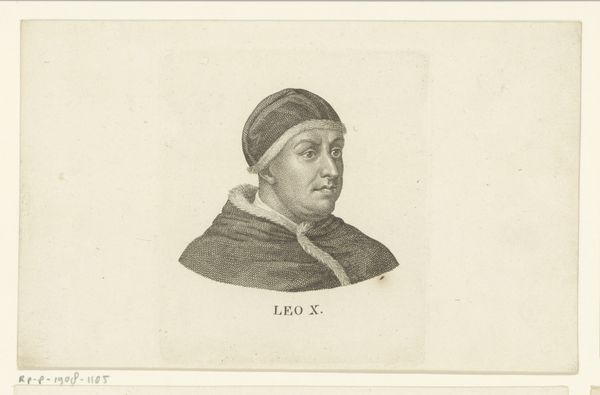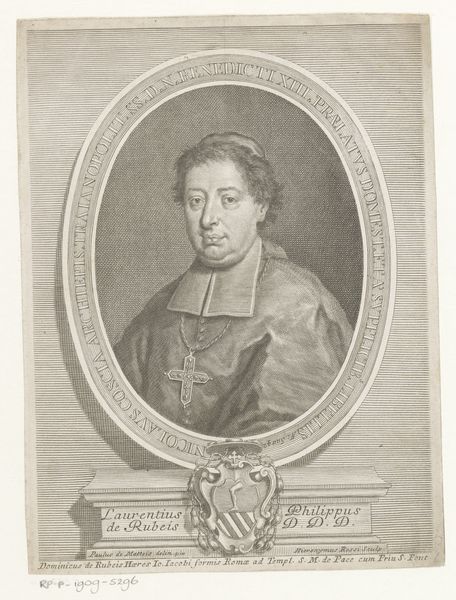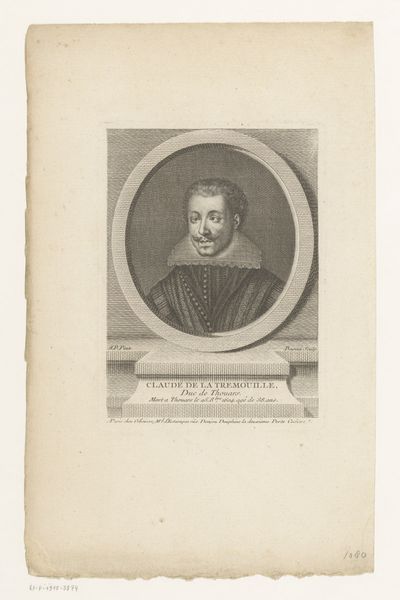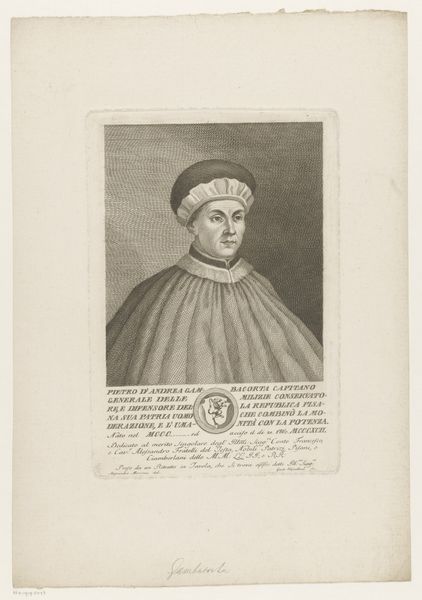
print, engraving
#
portrait
# print
#
old engraving style
#
classical-realism
#
portrait drawing
#
history-painting
#
academic-art
#
engraving
Dimensions: height 151 mm, width 99 mm
Copyright: Rijks Museum: Open Domain
Curator: This is Carl August Schwerdgeburth's "Portret van Leo X," an engraving, created sometime between 1795 and 1878. Editor: My first thought? Severe. Very little tonal variation, makes him look quite unforgiving. Curator: Interesting. Notice how Schwerdgeburth utilizes incredibly fine lines to build form and shadow. It's a masterclass in creating depth using only a single color, working with hatching and cross-hatching techniques to achieve an illusion of volume and texture in the figure’s robes and cap. The stippling in the background serves as a grounding force, while emphasizing Leo X’s isolated, authoritarian stance. Editor: Absolutely, but that isolation, coupled with his gaze averted to the side, speaks to a very specific kind of power dynamic. Leo X was Pope during a pivotal period, directly facing the rise of the Reformation and all its associated political upheavals. This engraving, then, can be read as a commentary on the Church's fragile authority—that averted gaze perhaps suggests either doubt, uncertainty, or evasion in the face of such challenges. The weightiness you mentioned isn’t just artistic; it mirrors the historical pressures he faced. Curator: Yes, and let's consider the artistic influences at play here. This is academic art at its finest; Schwerdgeburth, drawing heavily on classical-realism and the history-painting genre, presents a formal and highly composed image. The balance in the composition itself, with the figure centered and taking up almost the entire plane, suggests order and control. It emphasizes ideal human forms and moral or historical themes, adhering closely to established artistic conventions and traditions. Editor: It’s also a classic example of how portraits of powerful figures were carefully crafted. Think of this less as objective documentation, and more as a construction intended to shape perceptions. It reminds me of art historian Marcia Pointon's point about how portraiture participates in and reproduces societal expectations, conferring prestige and authority. The rendering may look “real," but the historical implications point elsewhere. Curator: Indeed. Schwerdgeburth’s meticulous technique mirrors that very intention. His deliberate mark-making gives Leo X an almost iconic presence. Editor: A presence imbued with a complicated legacy. Thinking about this work through an intersectional lens complicates our view of aesthetic intention, inviting questions about who art truly serves, and the systems it inherently upholds. Curator: Precisely. Thank you for pointing that out.
Comments
No comments
Be the first to comment and join the conversation on the ultimate creative platform.
